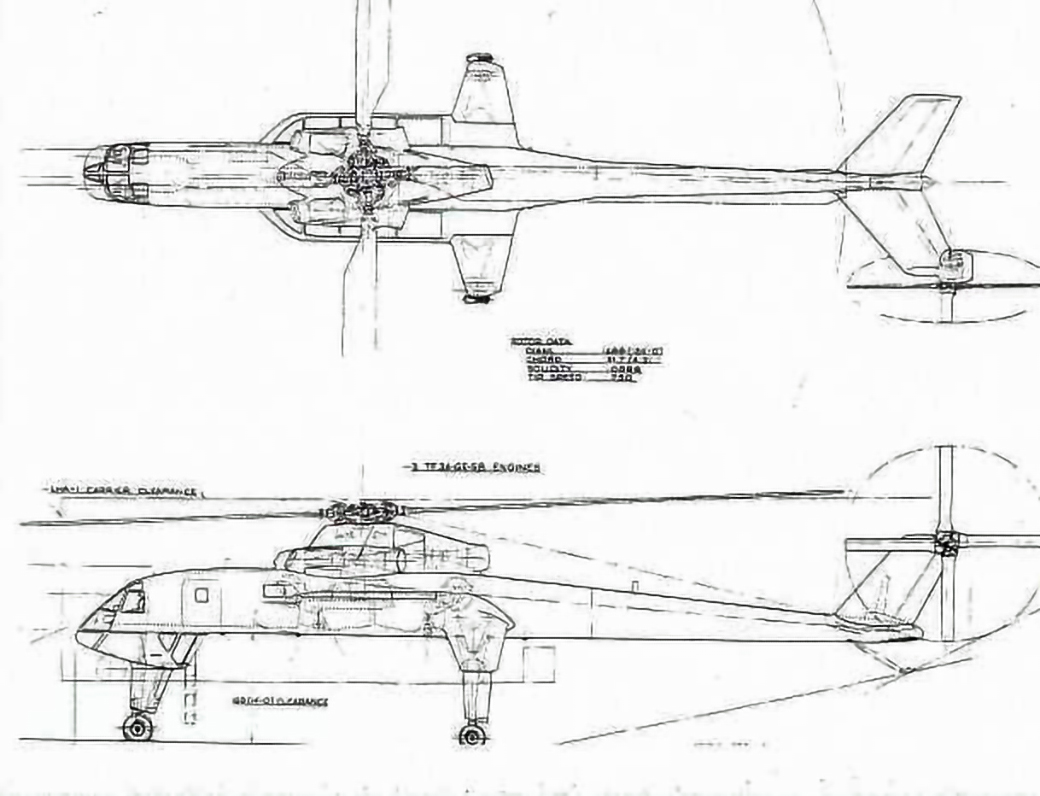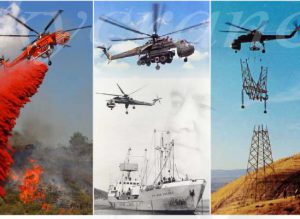Sikorsky Product History
Sikorsky Heavy Lift Helicopter (HLH)
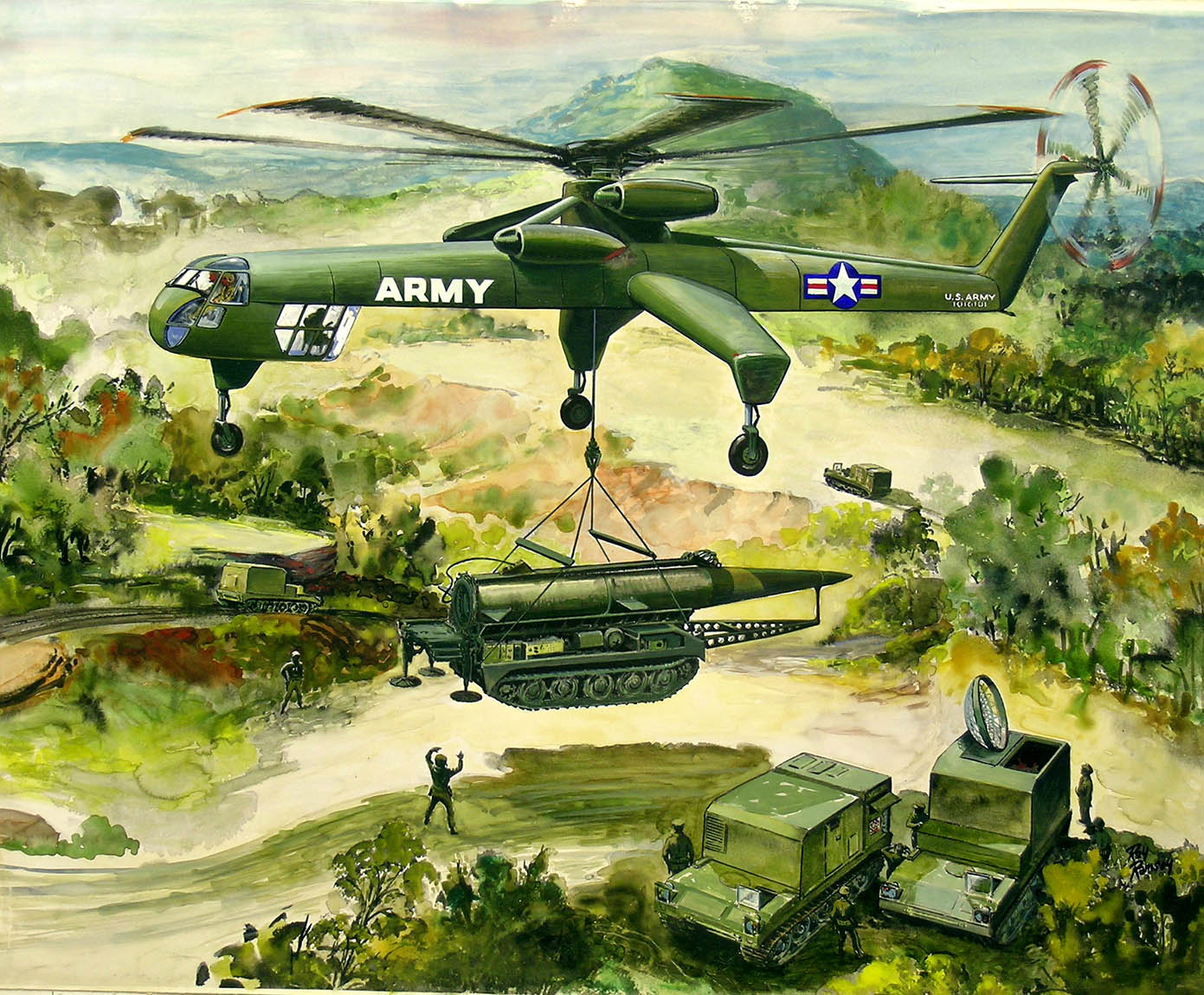
Background
In 1970, with the success of the Sikorsky S-64 crane helicopters, the U.S Department of Defense identified a need for a “Heavy Lift Helicopter”, or HLH. This would carry 22.5 tons, about twice the payload of the Sikorsky CH-54B. It would be used by both the Army and the Navy in the 1980s. They solicited proposals from industry for a research and development program leading to eventual production. This included the development of the dynamic components including the rotors and drive system, as well as the flight control and cargo handling systems. The dynamic components would be tested in a ground test bed and in a pre-prototype, flyable aircraft. A three-year development program was envisioned, after which work was to begin on a complete aircraft.
Proposals were submitted in February, 1971 from five companies – the Vertol Division of Boeing, the Hughes Tool Corporation, Gyrodyne of America, the Kaman Corporation, and Sikorsky. Sikorsky’s strongest competitor was Vertol which proposed a large tandem rotor crane.
Sikorsky had recently built a heavy-lift hoist test facility at the Stratford plant, the only one like it in the United States. This was thought to be a plus in the competition.
In May 1971 it was announced that Vertol had won the contract. This was a blow to Sikorsky, since they had pioneered the crane helicopter concept and felt that they were the most capable company to move the crane concept to this new larger level. Sikorsky president Wesley A. Kuhrt said in a statement released to the press “Our disappointment is heightened by the fact that Sikorsky is the only company in the western world which, with many millions of company funds invested, has been developing and building heavy-lift helicopters for more than ten years.”
At the same time, David Packard, deputy secretary of defense, announced that the Department of Defense was authorizing a program to meet special Navy and Marine Corps requirements for a shipboard based helicopter with a lift capability greater that that currently available, but less than the shore-base HLH. This was the upgrade of the Sikorsky CH-53D program to the CH-53E with a larger rotor and three engines. Sikorsky had been operating a three-engine test bed for some time, original intended for a growth S-64 Skycrane, but then redirected it to the CH-53. This went on to be the very successful CH-53E production program, which is now advancing to the even larger CH-53K.
The Vertol design, designated the XCH-62A, was initiated in 1971. It experienced development problems with the high-power drive system, and the program was cancelled in 1974.
Configuration Features
The HLH followed the basic configuration of previous Sikorsky crane helicopters, the S-60 and the S-64 – A single rotor/tail rotor design with a minimal fuselage and a cockpit which included an aft-facing pilot’s seat to better control the load being carried. Sikorsky stressed that the design was well within the technology limits of the time. The main rotor diameter was 124 feet. The tail rotor had a diameter of 26 ft. Both rotors used four blades. Three General Electric TF-34-58 engines were used, rated at 7,000 hp each.
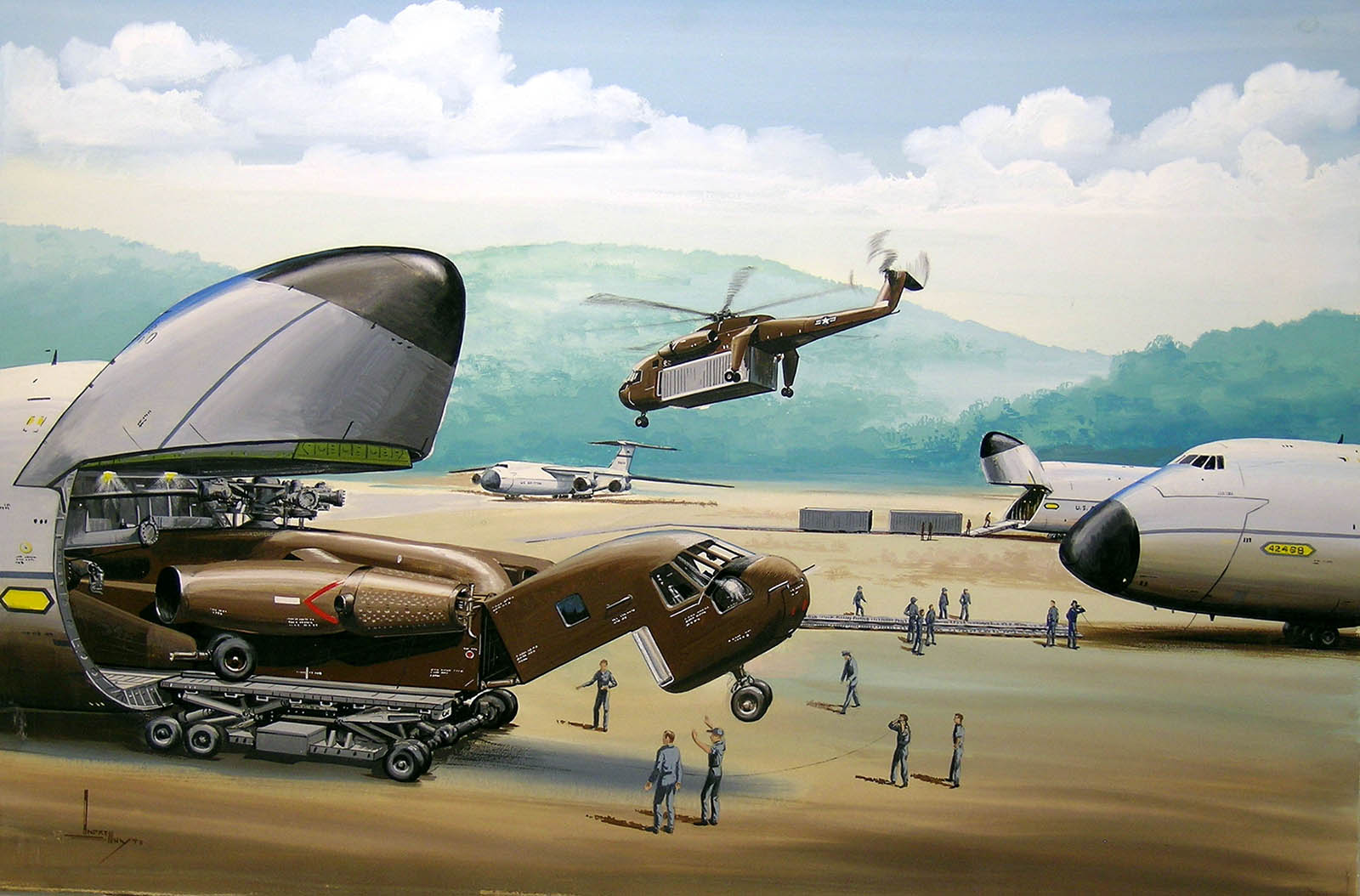
The rotor was simplified compared to rotors then in production. It contained 80 fewer major parts. Spherical elastomeric bearings were used in place of the three-hinge designs then in production at Sikorsky. Rotor blades were to be built of composite materials, which would be lighter, stronger, and stiffer than metal blades.
The transmission was to be an extension of a system recently tested which was capable of transmitting 11,300 horsepower, 3,000 more than the CH-53B. The HLH design power was 17,300 hp.
The proposed HLH had pushbutton controls mounted at two stations, one on each side of the pilot. These would replace cyclic and collective sticks.
The aircraft would have a crew of five and a cabin to the rear of the cockpit which could carry 12 combat troops.
General Arrangement
Design Characteristics and Performance
| HLH Characteristics and Performance | |
|---|---|
| Gross Weight | 118,000 lbs |
| Empty Weight | 59,000 lbs |
| Length | 110 ft. |
| Height | 31 ft. |
| Rotor Diameter | 124 ft. |
| No. of Blades | 4 |
| Chord | 4.31 ft. |
| Tip Speed | 750 ft/sec |
| Tail Rotor (TR) Diameter | 26 ft. |
| TR No. of Blades | 4 |
| TR Chord | 1.49 ft. |
| TR Tip Speed | 750 ft/sec |
| No. of Engines | 3 |
| Engine | GE TF-34-58 |
| Engine Power | 7000 hp each |
| Min Gearbox Power | 17,300 hp |
- by Art Linden
Related Articles
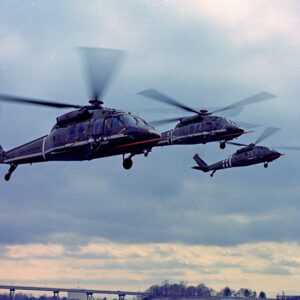
Bill Paul: Reflections on Sikorsky’s 100th Anniversary
Former Sikorsky President Bill Paul reflects on his career with Sikorsky, meeting Igor Sikorsky, and the Sikorsky Aircraft Company’s 100th anniversary.
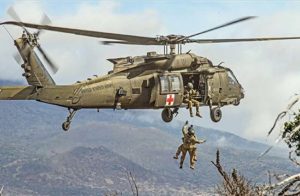
Sikorsky Lifts the Army
The U.S. Army saw the possibilities of the helicopter early in its development, thus beginning a relationship with Sikorsky Aircraft that continues to this day.
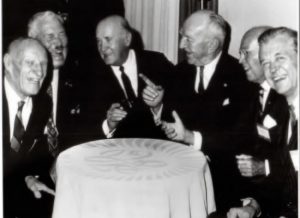
Predictions of a Pioneer
Igor Sikorsky’s predictions for air travel in general and for helicopters in particular have been largely realized or surpassed.
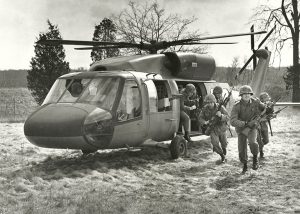
Ray Leoni: Recollections of a Sikorsky Junior Engineer
Ray Leoni recollects his 41-year career at Sikorsky Aircraft, beginning as a junior engineer and retiring as a Senior VP of Engineering and Advanced Programs.
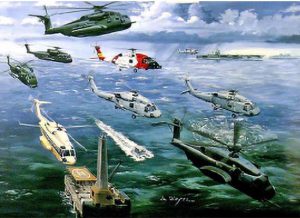
Sikorsky Aircraft Paintings by Andy Whyte
This issue of the newsletter is devoted to the aircraft designs and paintings by Andy Whyte, who had a 40 year career at Sikorsky Aircraft.
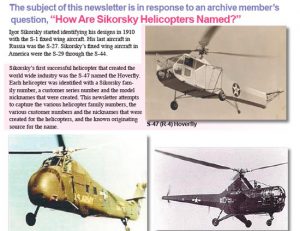
How Sikorsky Helicopters Are Named
The subject of this newsletter is in response to an archive member’s question, “How Are Sikorsky Helicopters Named?”
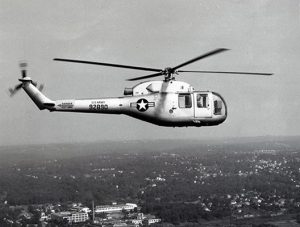
Sikorsky Aircraft in the 1960s
The decade of the 1960s gave birth to the era of Sikorsky turboshaft engine-powered helicopters.

